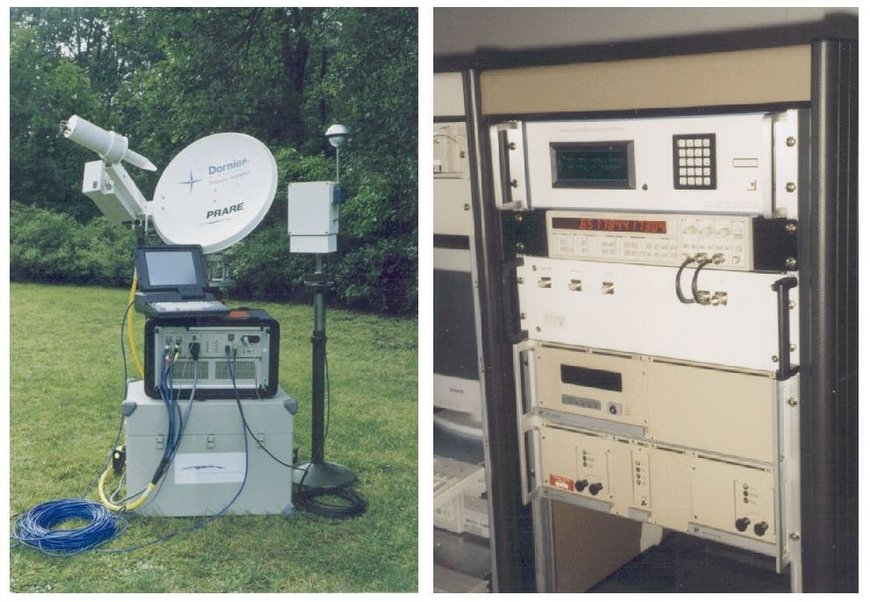Precise Range And Range-Rate Equipment (PRARE)
The PRARE-system (Precise Range And Range-Rate Equipment) was developed in Germany in the eighties to measure distances and relative velocities between special PRARE ground stations and PRARE space segments on various satellites. By means of these measurements it is possible to determine the satellites orbits and coordinates of the PRARE ground stations very precisely. The PRARE measurement principle (determination of signal travel times and frequency Doppler shifting) is basically very similar to those of the US GPS-system or the French DORIS-system. Compared with GPS and DORIS, PRARE allows, being designed as a two frequency two way system, a more direct monitoring of parameters being relevant for the system accuracy (e.g., clock parameters and system-internal signal travel times).
A globally distributes network of PRARE ground stations (development at DORNIER, resp. ND-Satcom) was installed and operated on behalf of ESA (European Space Agency), tracking the satellites ERS-1 (1991), Meteor 3-7 (1994-1995) and ERS-2 (1995-2007) (space segments by Timetech resp. Kayser Threde). After the foundation of the GFZ and direction of department 1 by Prof. Dr. Dr. h.c. Reigber (formerly Deutsches Geodätisches Forschungsinstitut, DGFI), it was GFZ Section 1.2 being responsible for the system operation and PRARE product provision since 1992 (formerly DGFI). The operation of the PRARE-system was ceased in January 2007, mainly due to ground station aging and cost reasons (no funding since 2004).
A system operation report (until end of funding in 2003, in German language) can be found here.
Falck, C., Flechtner, F., Massmann, F.-H., Raimondo, J.-C., Reigber, Ch., and Scherbatschenko, A. (2013), Betrieb des PRARE-Bodensegments für ERS-2 - Abschlussbericht 2003. Scientific Technical Report 04/20, GFZ German Research Centre for Geosciences.



